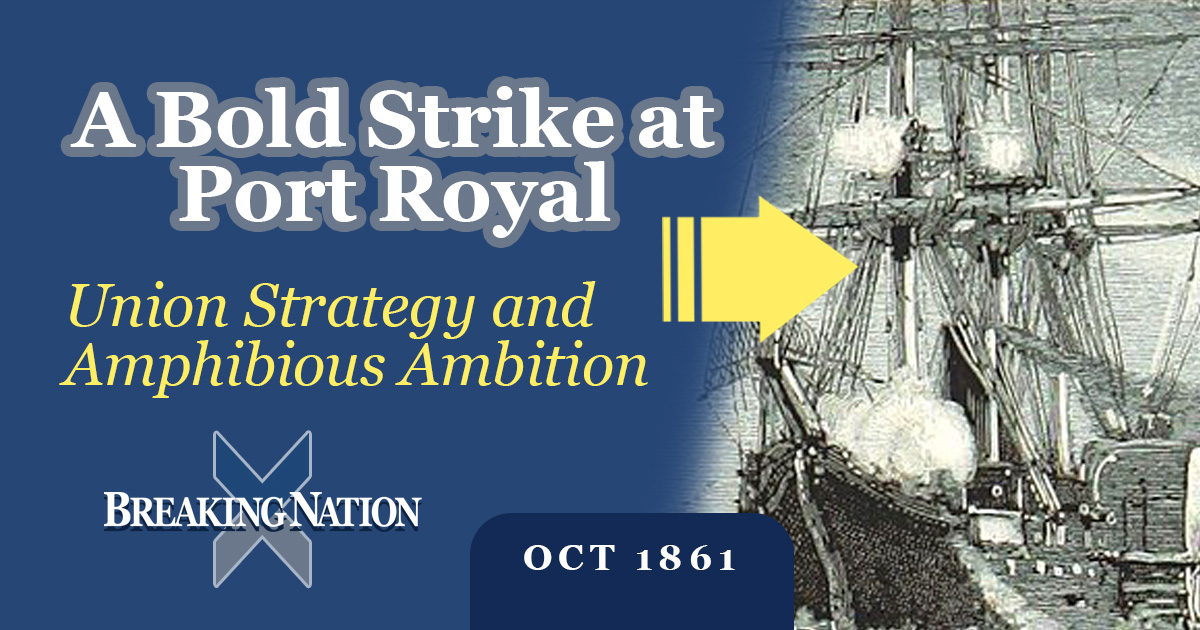Storming the Southern Coast: The Port Royal Expedition of 1861

The Port Royal Expedition of October 1861 stands as one of the early examples of Union ambition in the Civil War, combining naval and army forces in a bold attempt to seize control of the Southern coastline. The operation targeted Port Royal Sound in South Carolina, a strategically vital deep-water harbor between Savannah and Charleston. By capturing it, the Union hoped to establish a permanent foothold for blockading operations and future inland campaigns. Central to the success of this expedition were Forts Beauregard and Walker, the Confederate defenses guarding the entrance to the Sound. Their capture would open the way for Union naval dominance in the region, and the operation’s design reflected a growing understanding that controlling key geographic points could shape the broader course of the war.
On November 7, 1861, after days of careful planning and movement, the Union fleet under Flag Officer Samuel F. Du Pont began a bombardment of Forts Beauregard and Walker. The fortifications, though stout and defended by determined Confederate troops, were subjected to a coordinated naval artillery attack that proved decisive. By the end of the engagement, both forts had fallen, and Union forces quickly moved to occupy the surrounding area. This victory, achieved with minimal Union casualties, underscored the effectiveness of combining naval firepower with amphibious landings—an approach still relatively novel in American military operations at the time.
Strategically, the capture of Forts Beauregard and Walker had far-reaching consequences. It secured Port Royal Sound as a base for the Union blockade, allowing the Navy to interdict Confederate shipping along the southeastern seaboard more effectively. The operation also provided a staging ground for inland raids and demonstrated the Union’s capacity to project force into Confederate territory. The psychological impact was equally significant: it sent a clear signal to both the South and the Northern public that the Union could strike at vital points along the Confederate coast.
Furthermore, Port Royal served as an early proving ground for joint operations, highlighting both the promise and the difficulties of coordinating Army and Navy forces. While the expedition was ultimately successful, it revealed logistical and command challenges that would shape later campaigns.
In sum, the capture of Forts Beauregard and Walker during the Port Royal Expedition exemplifies the Union’s strategic ingenuity, the growing importance of naval power, and the operational complexities of the Civil War. It marked a turning point in the Union’s blockade strategy and demonstrated that key victories could be achieved with careful planning, technological advantage, and the integration of land and naval forces.
Breaking Nation: A Civil War Podcast explores the American Civil War, its turning points, and our national memory. Discover full episodes, transcripts, and resources at www.breakingnation.com — your destination for in-depth Civil War podcast content and fresh perspectives on America’s past. Listen on Apple Podcasts, Spotify and Amazon Music.




